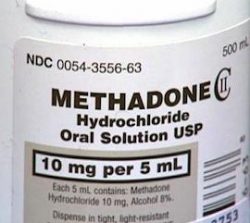How Does Methadone Work?
Methadone actually has two uses when prescribed to patients: to treat pain and to treat addiction by minimizing withdrawal symptoms and cravings associated with opioid abuse. The first use for methadone is fairly simple and similar to that of other prescription-based opioids; according to the NLM, it “works to treat pain by changing the way the brain and nervous system” respond to that stimuli. The way it works to treat addiction, however, is a bit more complicated.
Methadone Maintenance Treatment
Many individuals who have been long-time abusers of opioid drugs cannot stop taking them immediately. Some may even need to continue taking these drugs indefinitely. In this case, patients can be put on a maintenance program where they have access to methadone treatment and take the drug once every day under the supervision of a doctor. This program can last as long as the individual needs it to, and in some cases, the patient is weaned off the drug when they are ready to be.
Minimizing Cravings and Withdrawal Symptoms
The drug “works to treat people who were addicted to opiate drugs by producing similar effects and preventing withdrawal symptoms in people who have stopped using these drugs.” Cravings and intense withdrawal symptoms are two of the most dangerous side effects associated with stopping opioid abuse, as they can cause an individual to relapse.

Methadone works by reducing cravings and the symptoms of withdrawal.
Without the full extent of these symptoms, the recovering addict has a reduced chance of relapse and overdose as a result. Methadone also blocks the effects of other opioid drugs so the individual is less likely to abuse them in order to feel their euphoric effects.
Relationship with Therapy
Methadone has a beneficial relationship with the necessary therapy sessions for addicts, as it allows the individual to better concentrate on their behavioral treatment. When a person takes methadone regularly, they will not experience intense withdrawal symptoms and will be able to concentrate on the therapeutic side of treatment. Therefore, the drug helps patients avoid opioid abuse in another way and allows them to gain more from other types of addiction treatment.
Protocol for Methadone Treatment
According to the CDC, methadone works best when the patient is given “a dose of 60-120 mg/day.” This provides patients with all the benefits of methadone treatment but does not cause euphoria or intoxication. While some individuals require a higher dosage, that issue can be dealt with on a case-by-case basis.
Benefits of Methadone
Since methadone blocks the effects of other opioids and reduces cravings, a person who is on this treatment will often experience a reduction in opioid drug abuse. The benefits of this effect are staggering and include:
- Reduced risk of overdose
- Reduced risk of contracting diseases like HIV and hepatitis
- Reduced criminal activity
- Better pregnancy outcomes
- “Improved family stability” and potential for employment
All of these results can be directly related to the careful and safe administration of methadone. While the drug works by helping people avoid the dangerous and unpleasant effects of stopping opioid abuse, its use has many other benefits for patients, including allowing them to recover their lives and helping them to better concentrate on their behavioral treatments which are often available through methadone clinics as well.